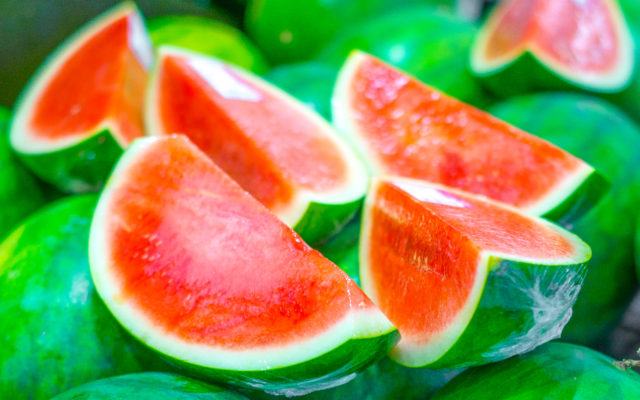WORK SMARTER NOT HARDER: Here’s How to Choose the Yummiest Watermelon.

Watermelon… Yum! It’s not just a summer favorite. It’s actually a secret weapon for protecting your good health.
Here’s how it helps us, and how to choose it:
It’s 92% water, so eating it helps us stay hydrated. It’s especially helpful, both before and after a workout.
Watermelon left at room temperature is packed with more antioxidants than one stored in the fridge.
It makes us feel good! Watermelon is loaded with vitamin C, and vitamin B-6, which our bodies use to manufacture the mood balancing brain chemicals serotonin and dopamine.
Watermelon is high in cancer-fighting lycopene! That’s an anti-oxidant and nutrient, which also helps your heart.
Did you know that it is rich in L-citrulline? That’s an amino acid, which helps improve blood flow (like Viagra, L-citrulline increases blood flow to the sexual organs, without any negative side effects).
Here’s how to pick the best one:
Whether you choose a round, oval, or elongated watermelon, make sure it has a symmetrical and uniform shape – without bumps or cuts.
Watermelon with seeds is sweeter than seedless.
When you’re choosing a watermelon, go for the one that feels the heaviest for its size.
Turn around the watermelon and look for a yellow spot, which suggests it reached peak ripeness on the vine. Avoid those with a white spot.
Try tapping a watermelon with your hand or fist. A ripe one delivers a deep sound. An overripe melon sounds hollow or flat.
A ripe watermelon should have a firm rind, that doesn’t give to pressure, and is not easily scratched.
A watermelon’s tail is a piece of stem, which remains attached after harvesting. A dry stem usually indicates a ripe watermelon.
Damaged or spoiled watermelons may not be safe to eat. Some signs you should pay attention to include dark spots, rind injuries, and a rancid odor.







